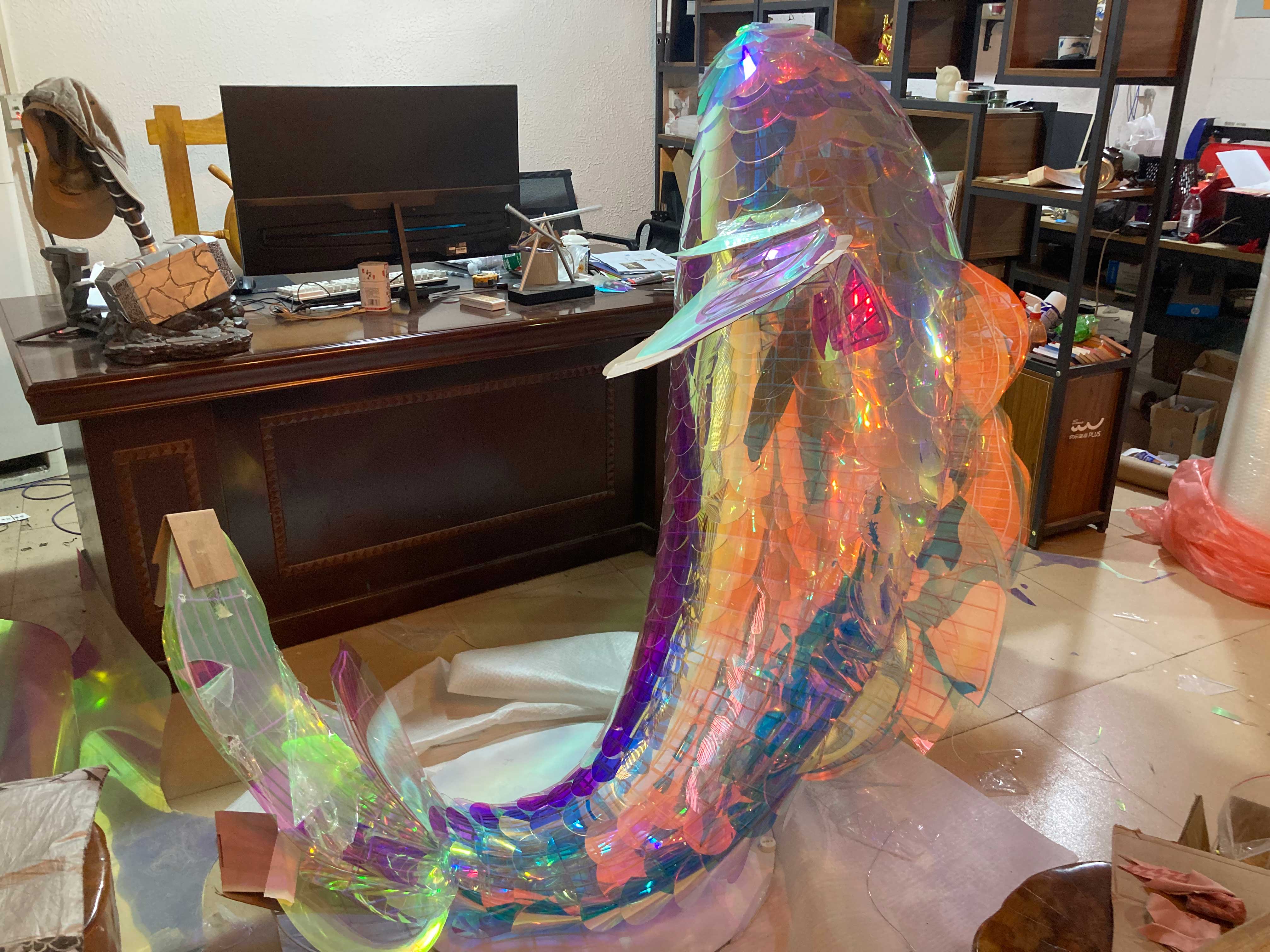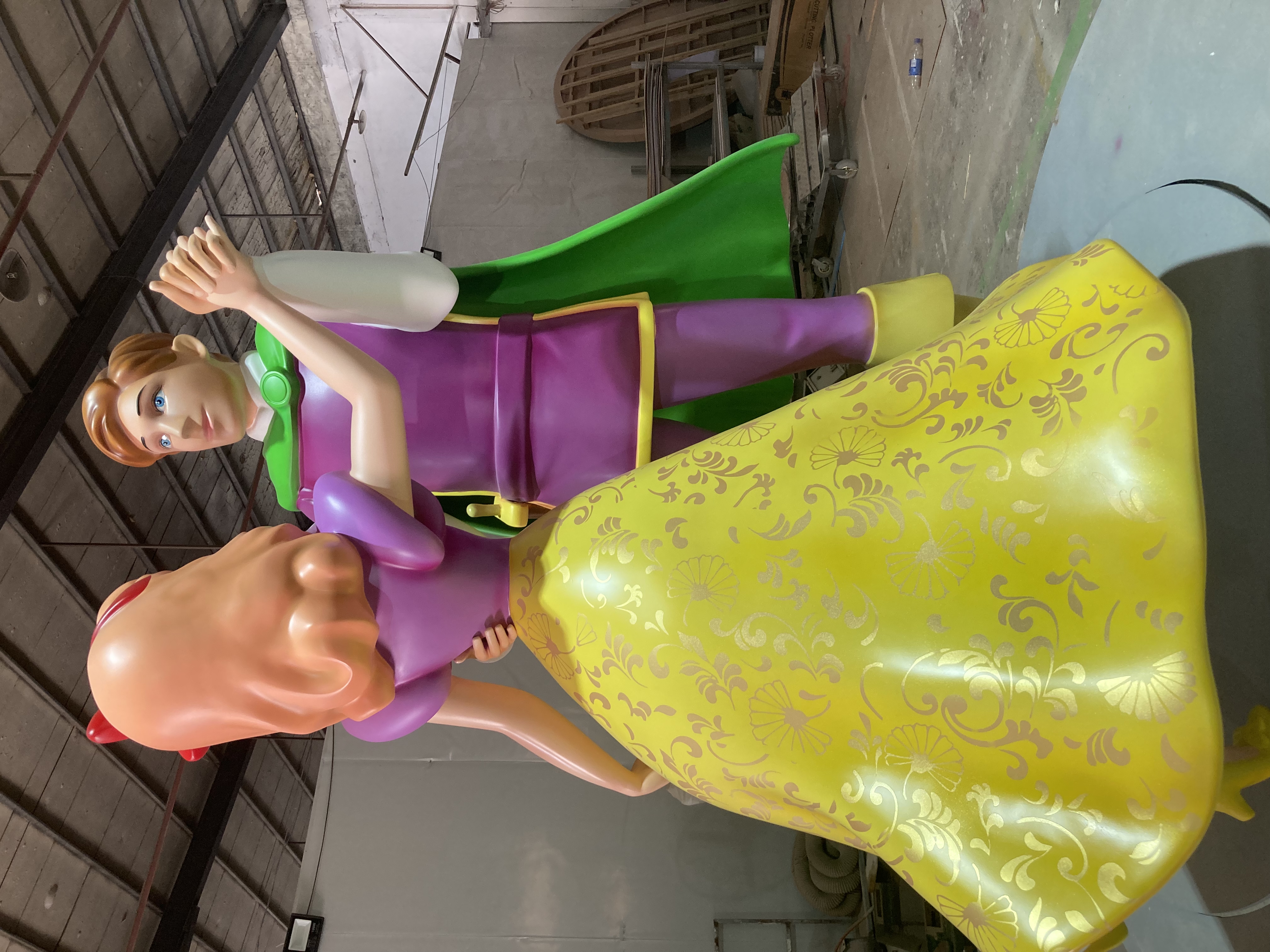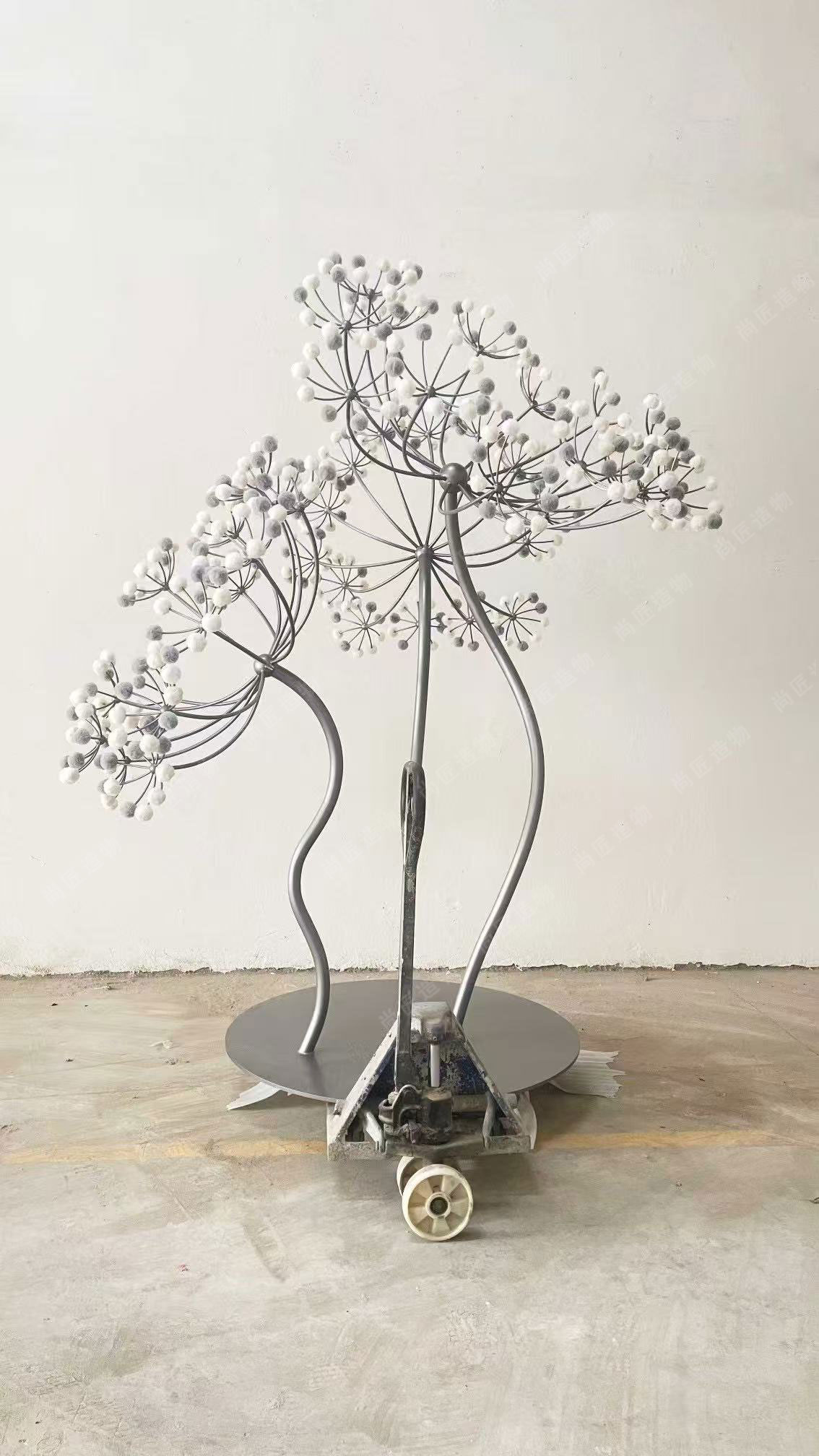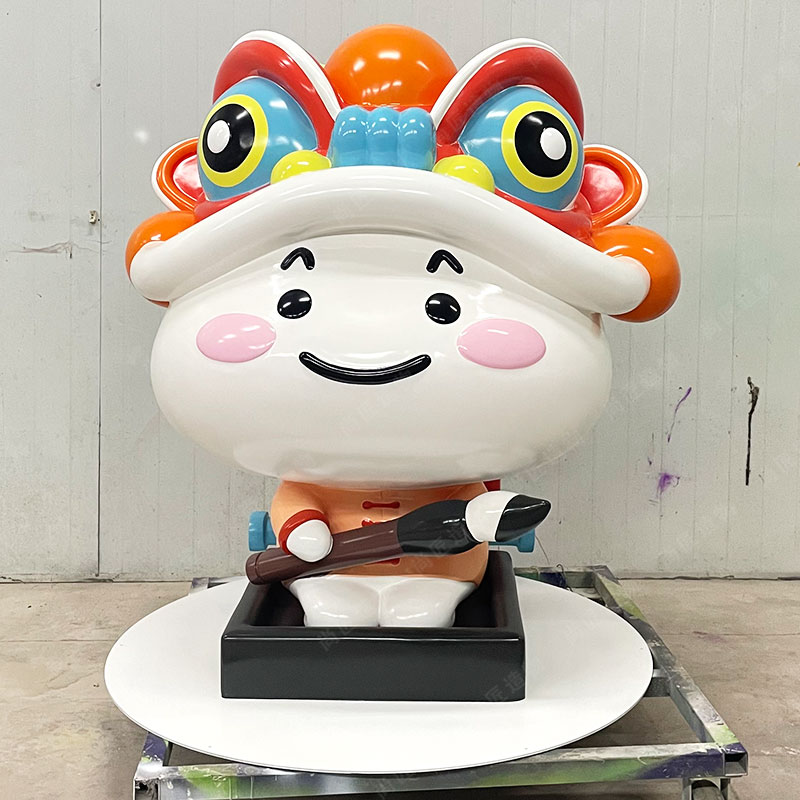Key Takeaways
Stainless steel sculptures serve as a dynamic medium for merging commercial themes with public artistry, offering both aesthetic and symbolic value. Their durability and reflective surfaces make them ideal for outdoor installations, where they withstand weather while engaging viewers through shifting light and mirrored textures. By reinterpreting everyday merchandise—like consumer goods or brand symbols—into abstract or figurative forms, these works invite audiences to reconsider the relationship between commerce, culture, and communal spaces.
"Public art shouldn’t just decorate cities—it should spark conversations. Stainless steel’s versatility allows artists to mirror society’s complexities, including its consumer-driven rhythms." — Public Art Review, 2022
A defining feature is their ability to subvert expectations: a sculpture inspired by a mundane product, such as a stainless steel sculpture mimicking a disposable coffee cup, challenges perceptions of value and permanence. This duality—combining industrial materials with commercial motifs—creates layered narratives about sustainability, consumer habits, and artistic innovation.
Tip: When commissioning public art, consider how stainless steel’s reflective properties can interact with surrounding architecture and natural light to amplify thematic resonance.
Urban planners and artists increasingly collaborate on such projects to transform sterile commercial districts into culturally rich environments. By embedding merchandise-inspired designs into shared spaces, these works democratize artistic critique, making reflections on consumerism accessible to diverse audiences.

Stainless Steel Sculptures Bridge Art and Commerce
Stainless steel sculptures serve as a dynamic intersection between artistic expression and commercial influence, merging industrial materials with cultural commentary. Their corrosion-resistant properties and reflective surfaces make them ideal for public installations that reinterpret everyday consumer symbols—think oversized product replicas or abstracted brand logos—into enduring artworks. For example, a Realistic sculpture of a common object, rendered in polished steel, can transform a mundane item into a focal point that sparks dialogue about materialism and identity.
| Aspect | Artistic Role | Commercial Role |
|---|---|---|
| Material Choice | Symbolizes modernity, permanence | Reflects industrial innovation |
| Design Themes | Critiques consumer culture | Celebrates brand recognition |
| Public Engagement | Invites reflection on values | Strengthens urban branding |
This duality allows cities and corporations to collaborate on installations that enhance civic spaces while subtly embedding commercial narratives. By balancing aesthetic appeal with thematic depth, stainless steel sculptures redefine how audiences interact with both art and commerce in shared environments. Their adaptability ensures relevance across contexts, from corporate plazas to community parks, fostering connections between creative vision and market-driven storytelling.
Transforming Consumer Culture Through Metal Art
Stainless steel sculptures act as dynamic mediators between commercial iconography and public spaces, reshaping how societies engage with consumer culture. By reinterpreting everyday merchandise—from branded logos to mass-produced objects—as monumental art, these works challenge perceptions of value and permanence. Unlike transient advertising, stainless steel’s corrosion-resistant properties ensure longevity, embedding commercial motifs into urban landscapes for decades. The material’s reflective surface amplifies this dialogue, mirroring viewers and surroundings to create interactive critiques of consumerism’s omnipresence. For instance, kinetic sculptures inspired by industrial machinery or retail displays transform static commerce into fluid, participatory experiences. Artists leverage steel’s versatility to abstract familiar products—soft drink bottles, shopping carts, or packaging—into geometric or organic forms, blurring lines between utility and artistry. This fusion invites public reflection on consumption habits while elevating mundane objects to cultural artifacts. As cities integrate such pieces into plazas or transit hubs, they foster civic engagement with themes of materialism, sustainability, and identity, proving that commerce-driven art can transcend mere spectacle to provoke lasting discourse.
Durable Public Art Inspired by Merchandise Motifs
Stainless steel sculptures have become a cornerstone of merchandise-inspired public art, merging commercial symbolism with enduring physical forms. By reinterpreting everyday consumer objects—such as branded logos, packaging, or product silhouettes—artists transform fleeting commercial imagery into permanent installations. The material’s resistance to corrosion and weathering ensures these works withstand urban environments, preserving their visual impact for decades. For instance, oversized stainless steel renditions of soda cans or smartphone designs not only critique consumerism but also invite viewers to reconsider familiar objects in monumental scales.
While materials like fiberglass sculpture offer versatility, stainless steel’s reflective surface adds a layer of interactivity, mirroring surroundings and shifting with light. This duality—grounded in both industrial practicality and artistic innovation—reinforces how commercial motifs can evolve into cultural landmarks. By embedding merchandise-inspired designs into public spaces, these sculptures create dialogues between commerce, art, and community, challenging perceptions of value and temporality in consumer-driven societies.

Reflective Aesthetics in Modern Steel Sculptures
The interplay of light and form in stainless steel sculptures creates a dynamic visual dialogue with their surroundings, amplifying their role as mediators between art and commerce. The material’s inherent reflectivity transforms static merchandise motifs—like logos, packaging shapes, or product silhouettes—into ever-changing installations. For instance, a sculpture mimicking a consumer goods container might cast distorted reflections of passersby, subtly critiquing the relationship between identity and consumerism. This mirror-like quality not only enhances aesthetic appeal but also invites public interaction, as viewers see themselves fragmented or magnified within the artwork’s polished surfaces.
Stainless steel’s durability ensures these pieces withstand urban environments, maintaining their conceptual sharpness over time. Artists often leverage its industrial associations to juxtapose commercial imagery with civic spaces, such as placing a Cartoon sculpture in a corporate plaza. The material’s neutrality allows it to adapt to both playful and critical interpretations, bridging accessibility with deeper commentary on modern consumption. By merging the familiar visual language of merchandise with abstract, reflective forms, these sculptures challenge viewers to reconsider everyday objects as vessels for artistic and cultural reflection.

Sculpting Urban Spaces with Commerce-Inspired Art
Stainless steel sculptures rooted in merchandise motifs are redefining how urban environments engage with consumer culture. These works often incorporate shapes and symbols drawn from everyday products—think oversized replicas of packaging, stylized brand icons, or abstract interpretations of retail objects. The material’s durability and resistance to corrosion make it ideal for outdoor installations, ensuring that these pieces withstand weather and time while maintaining their polished, reflective surfaces. For instance, the IP character sculpture series transforms recognizable commercial figures into larger-than-life public monuments, blending nostalgia with contemporary design.
By embedding consumer imagery into shared spaces, artists provoke conversations about materialism and identity. The mirrored finish of stainless steel adds a layer of interactivity, reflecting passersby and surrounding architecture—a metaphor for how commerce both shapes and mirrors society. Such installations often occupy high-traffic areas like shopping districts or transit hubs, strategically bridging art’s contemplative role with commerce’s dynamic energy. This fusion not only revitalizes urban aesthetics but also challenges viewers to reconsider their relationship with the products that populate daily life.
Merchandise Motifs Reimagined as Public Sculptures
Public art increasingly draws from everyday commercial symbols, reshaping recognizable merchandise motifs into thought-provoking stainless steel sculptures. By abstracting logos, packaging shapes, or product silhouettes, artists reinterpret consumer icons as cultural artifacts. For instance, a towering sculpture might mimic a beverage bottle’s curves, stripped of branding yet retaining its familiar form. Stainless steel’s versatility allows precise replication of textures—like crumpled foil or glossy surfaces—while its reflective quality mirrors viewers, subtly implicating them in the consumer narrative.
This process transforms fleeting advertising imagery into permanent installations, challenging perceptions of value. A shopping bag rendered in polished steel becomes a monument to materialism, its durability contrasting with disposable culture. Urban settings amplify this dialogue, as sculptures interact with storefronts or transit hubs, blending art with commerce-dominated environments. Such works neither glorify nor condemn consumerism but invite reflection on its pervasive role in modern life. By anchoring merchandise motifs in public spaces, stainless steel sculptures create shared reference points, bridging personal experiences with broader economic themes.
The Role of Steel in Art-Commerce Fusion
Stainless steel serves as a critical medium in merging artistic expression with commercial narratives, offering both structural integrity and symbolic resonance. Its industrial origins align with themes of mass production, while its polished surfaces reflect contemporary consumer aesthetics. Artists leverage steel’s adaptability to reinterpret merchandise motifs—such as branded logos or product silhouettes—into large-scale sculptures that engage public spaces. Unlike traditional materials, stainless steel withstands environmental wear, ensuring these works endure as permanent fixtures in urban landscapes.
This duality—functional yet artistic—allows steel sculptures to critique and celebrate consumer culture simultaneously. For example, oversized replicas of everyday objects like shopping bags or packaging, rendered in reflective steel, invite viewers to reconsider their relationship with materialism. The material’s mirror-like finish further integrates surroundings into the artwork, creating dynamic interactions between viewers, commerce, and environment. By transforming disposable symbols of trade into lasting monuments, steel bridges the ephemeral nature of consumer goods with the permanence of public art, fostering dialogue about value, sustainability, and cultural identity.
Stainless Steel’s Impact on Artistic Consumer Narratives
Stainless steel’s unique properties make it an ideal medium for artists interrogating consumer culture. Its resistance to corrosion and industrial sheen mirrors the durability and mass-produced nature of commercial goods, while its reflective surfaces invite viewers to confront their own roles within consumer systems. Artists often employ merchandise motifs—such as oversized replicas of everyday products or abstracted brand symbols—to critique materialism or celebrate cultural icons. For example, stainless steel sculptures of disposable items like soda cans or shopping bags paradoxically immortalize transient objects, prompting discussions about value and permanence.
The material’s adaptability supports both hyper-realistic and minimalist styles, enabling creators to balance familiarity with abstraction. This duality allows public art to function as both a mirror of consumer habits and a canvas for reimagining them. By embedding commercial imagery into enduring steel forms, artists reframe fleeting trends as shared cultural landmarks, fostering dialogue about consumption’s evolving role in urban identity. Such works often serve as subtle counterpoints to advertising, using similar visual language to subvert—rather than sell—consumer narratives.

Conclusion
Stainless steel sculptures serve as a critical intersection between commercial influence and artistic innovation, offering lasting physical forms to ideas born from consumer culture. Their durability and resistance to corrosion make them ideal for public installations, where they withstand environmental challenges while maintaining visual impact. By reinterpreting merchandise motifs—such as logos, packaging, or product silhouettes—these works transform fleeting commercial symbols into permanent cultural markers. The reflective surfaces of polished steel further engage viewers, mirroring their surroundings and inviting contemplation on consumption’s role in shaping identity and space. While rooted in industrial materiality, such sculptures transcend mere replication, instead fostering dialogue about how commerce influences creativity—and vice versa. Ultimately, they anchor abstract concepts of consumerism in tangible, accessible forms, ensuring that public art remains both a reflection of its time and a catalyst for reimagining the relationship between commerce and community.
FAQs
How does stainless steel enhance merchandise-inspired public art?
Stainless steel’s durability and resistance to corrosion make it ideal for outdoor installations, ensuring commercial motifs remain visually intact despite weather exposure. Its reflective surface also interacts with light and surroundings, adding dynamic layers to consumer-themed narratives.
What commercial motifs commonly appear in steel sculptures?
Everyday items like packaging, logos, or product replicas are reimagined at monumental scales. For example, oversized steel sculptures of shopping bags or beverage cans critique consumerism while blending humor with industrial elegance.
Can these sculptures withstand urban environments long-term?
Yes. Stainless steel’s low maintenance needs and structural resilience allow artworks to endure decades of foot traffic, pollution, and climate shifts, making them cost-effective for cities aiming to merge art with commerce.
How do reflective surfaces deepen artistic meaning?
Mirror-like finishes invite viewers to see themselves within the artwork, symbolizing personal participation in consumer culture. This interactivity transforms static objects into evolving commentaries on modern materialism.
Do such sculptures promote brands or critique consumerism?
They balance both. While recognizable commercial forms attract attention, artists often subvert their original intent—distorting proportions or adding abstract elements—to spark dialogue about consumption’s societal impact.
 ch
ch English
English






